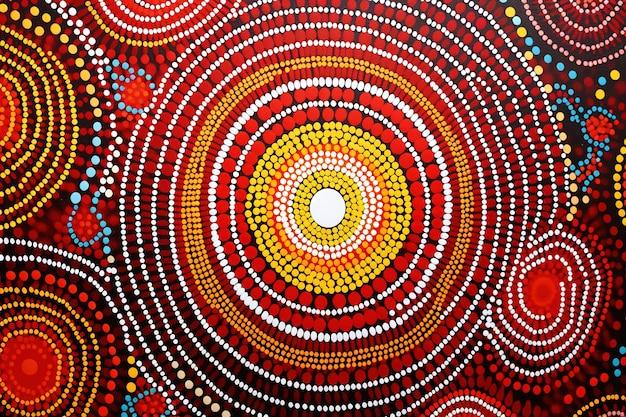Indigenous cultures are rich in symbolism and meaning, and colours play a significant role in their traditions. Colours hold deep spiritual and cultural significance for Native American and First Nations communities. Understanding the meanings behind these colours helps us appreciate the profound connection between Indigenous peoples and their environment.
In this blog post, we will explore the symbolism of colours in Indigenous culture, delving into what colours represent power, happiness, and spirituality. We will also discuss the significance of specific colours like blue, red, purple, and orange in Native American and First Nations traditions. Additionally, we will learn about the spiritual importance of the four directions, sacred colors, and even how to identify if you have Native American heritage. So, let’s dive into the vibrant world of Indigenous colours and their meanings!
What Do Colours Mean In Indigenous Culture
In Indigenous culture, colours hold significant meaning and symbolism. From the vibrant hues of nature to the rich pigments used in traditional artwork, colours play a vital role in expressing cultural values, spiritual beliefs, and societal roles. Let’s take a colorful journey into the world of Indigenous culture and explore the meanings behind various colours.
The Sacred Significance of Red
Red, the colour of fire and blood, holds immense significance in Indigenous culture. Symbolizing strength, power, and vitality, red is often associated with the life force that flows through all living things. It represents the energy that connects the physical and spiritual realms. Red is frequently used in ceremonies, dances, and rituals, capturing the attention and respect of the community.
Embracing the Wisdom of Yellow
Yellow is a hue that embodies the warmth of the sun and the wisdom of the elders. In Indigenous cultures, it symbolizes intellect, knowledge, and spiritual enlightenment. It is the colour of guidance and guidance-seeking, often representing the search for truth and understanding. Yellow can be found in many Indigenous artworks, depicting the importance of acquiring wisdom through learning and experience.
The Intricate Dance of Blue
Blue, the colour of the sky and water, plays a significant role in Indigenous culture. Representing peace, harmony, and spirituality, blue is often associated with the divine realms. It symbolizes emotional healing and the ability to connect with one’s inner self and the wider universe. Through various artistic mediums, blue is used to depict the delicate balance between the physical and metaphysical aspects of existence.
Exploring the Diversity of Green
Green is a colour that represents growth, renewal, and the interconnectedness of all living things. It symbolizes fertility, prosperity, and the vibrant energy of nature. In Indigenous cultures, green often conveys a sense of balance and harmony with the natural world. It is a reminder of our responsibility to protect and nurture the environment for future generations.
Harnessing the Power of Black
Black, the absence of light, holds a unique place in Indigenous culture. Contrary to its association with darkness and negativity in some Western societies, black often signifies power, protection, and spiritual transformation. Black is believed to possess the ability to absorb and dispel negative energy, making it an essential colour in various ceremonial practices. It represents the strength and resilience of Indigenous communities throughout history.
Celebrating the Unity of White
White represents purity, spirituality, and the interconnectedness of all beings. It is often associated with winter, snow, and the quiet tranquility of the natural world. White plays a significant role in Indigenous ceremonies and rituals, symbolizing the quest for balance and harmony within oneself and the community. It invokes a sense of unity and the shared experiences of Indigenous peoples across different cultures and traditions.
Colours hold a profound significance in Indigenous culture, reflecting the deep connection between humans, nature, and spirituality. They serve as a visual language, conveying profound meanings and narratives that have been preserved for generations. By understanding the symbolism behind these vibrant hues, we can gain a deeper appreciation for the rich cultural heritage of Indigenous communities.
Please note that this article is meant to provide a general overview of the meanings behind colours in Indigenous culture. The specific interpretations can vary greatly among different Indigenous communities and regions.
FAQ: What Do Colors Mean in Indigenous Culture
What Colors Mean in Native American Culture
Colors hold significant meaning in Native American culture, representing various aspects of life, spirituality, and tradition. Each color carries its own symbolism and interpretation, adding depth and richness to the indigenous culture.
What Color Symbolizes Power
Red is often associated with power in Native American culture. It represents strength, leadership, and courage. The vibrant hue embodies the energy and authority of influential figures within the community.
Do Native Americans Have Body Hair
Yes, Native Americans, like people from any other ethnic group, have body hair. However, it’s important to note that body hair growth varies among individuals and is influenced by genetics and personal factors rather than cultural affiliation.
What Colors Represent First Nations
First Nations peoples embrace a rich spectrum of colors in their cultural symbolism. Each color carries its own significance, but common colors representing First Nations include red, symbolizing power and vitality, and turquoise, representing healing and protection.
What Does Blue Mean in Indigenous Culture
In indigenous culture, blue signifies spirituality, purity, and wisdom. It represents the connection between the physical world and the spiritual realm, offering guidance and insight through its calming and introspective qualities.
What Are the Four Directions of Aboriginal Life
The four directions hold immense spiritual significance in Aboriginal life. They represent the cardinal directions: East, South, West, and North. Each direction is associated with its own set of teachings, elements, and symbolic representations that contribute to a holistic worldview.
What Are Sacred Colors
Sacred colors are colors that carry great spiritual importance in indigenous cultures. These colors symbolize different aspects of life and spirituality, and their significance varies across tribes and regions. Some commonly recognized sacred colors include red, white, black, blue, and yellow.
What Color Means Happy
In indigenous culture, yellow is often associated with joy, happiness, and positivity. This vibrant color represents the warmth of the sun, illuminating life and bringing a sense of inner happiness and bliss.
What Are the Four Sacred Mountains
The four sacred mountains hold deep spiritual significance in many indigenous cultures. While the specific mountains vary among tribes and regions, they represent the four cardinal directions, embodying the power and guidance of the natural world.
What Color Eyes Do Native Americans Have
Native Americans, like any other ethnic group, exhibit a wide range of eye colors. While brown eyes are quite common among Native Americans, eye color is determined by genetics and can vary from individual to individual.
Why Are Indigenous Shirts Orange
Orange shirts hold a special significance in some indigenous cultures, particularly in commemoration of the residential school experiences of Indigenous peoples in Canada. The orange shirt movement aims to raise awareness and honor survivors and those affected by the assimilation policies.
How Can I Prove My Native American Heritage
Proving Native American heritage involves various methods, such as genealogical research, document verification, and consultation with tribal authorities. Working closely with professional genealogists or utilizing resources offered by tribal nations can help in determining and proving Native American ancestry.
What Does Red Mean in Native Culture
Red holds multifaceted symbolism in Native American culture. It represents power, strength, vitality, and courage. Red also symbolizes the life force, blood, and the connection between all living beings.
What Are the Four Indigenous Colors
The four indigenous colors, often associated with the four directions, include red, white, black, and yellow. These colors hold deep spiritual significance and are interconnected with various aspects of indigenous life, culture, and symbolism.
What Colors Are Important to Indigenous People
Colors play a vital role in indigenous cultures, holding significant spiritual, cultural, and historical importance. While the importance of colors can differ among tribes and regions, colors such as red, blue, yellow, green, white, and black are often recognized as significant within indigenous communities.
How Can You Tell if You Are Part Native American
Determining Native American heritage involves exploring family history, genealogy research, and possibly consulting with tribal authorities. It’s important to approach this process with respect and sensitivity, recognizing that tribal affiliation and self-identification play crucial roles in Native American identity.
What Does the Color Orange Mean to Indigenous People
In indigenous cultures, orange is often associated with kinship and community. It represents strength stemming from unity and the power that can emerge when people come together.
What Is the Calmest Color
Blue, with its soothing and tranquil qualities, is often considered the calmest color. It promotes relaxation, peace, and stability, evoking a sense of serenity and harmony.
What Are Indigenous Colors
Indigenous colors encompass a vibrant spectrum, reflecting the diversity and richness of indigenous cultures worldwide. These colors hold deep cultural significance and symbolize various aspects of life, spirituality, and tradition within indigenous communities.
What Does West Represent Spiritually
In spiritual contexts, the West often symbolizes introspection, completion, and the setting sun. It represents the twilight hours, where reflection and inner growth take place, offering a space for transformation and renewal.
What Is the Love Color
Different cultures associate various colors with love. In Native American culture, the color associated with love can vary amongst tribes and individuals. Some may perceive red as the color of love due to its association with passion and strong emotions.
What Does Purple Mean in Native American
Purple carries diverse meanings in Native American culture, ranging from spirituality and reflection to royalty and leadership. This color represents the balance between the physical and spiritual realms, often associated with wisdom and enlightenment.
What Are the 4 Sacred Colors
The four sacred colors vary among tribes and cultures but generally include red, white, black, and yellow. These colors correspond to the four cardinal directions, embodying spiritual teachings, connections to nature, and a holistic understanding of the world.

